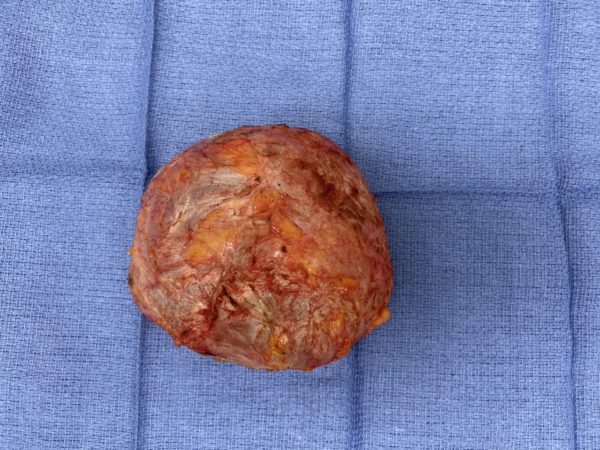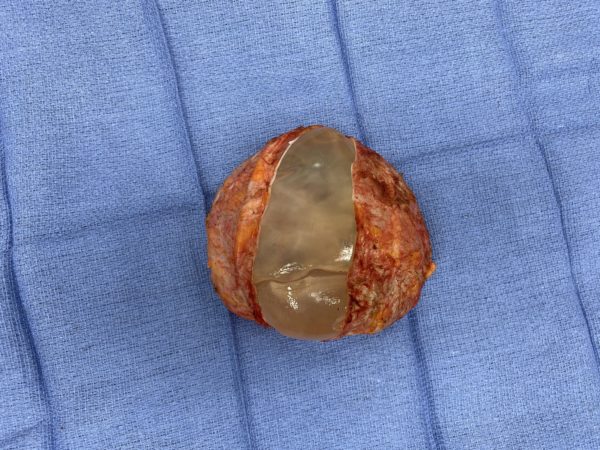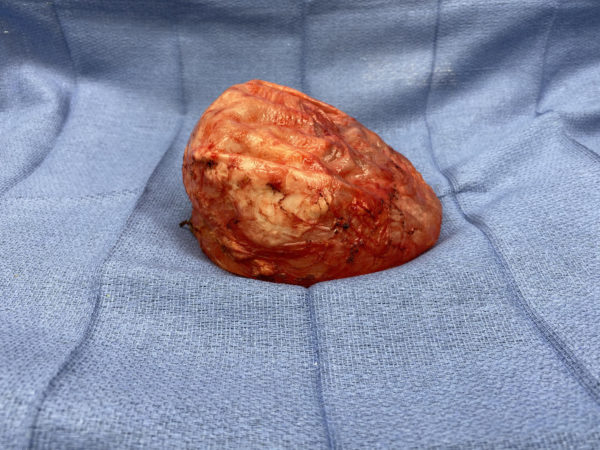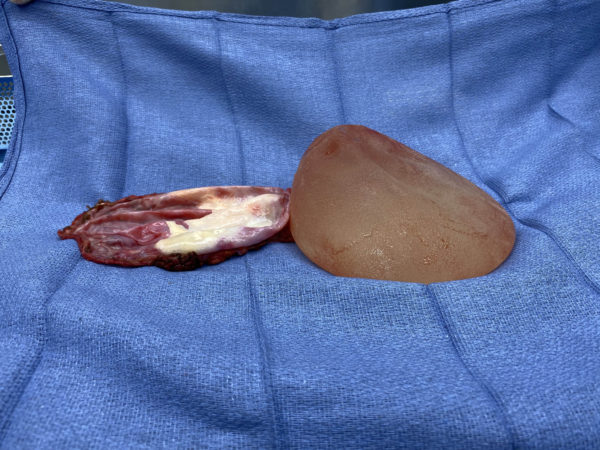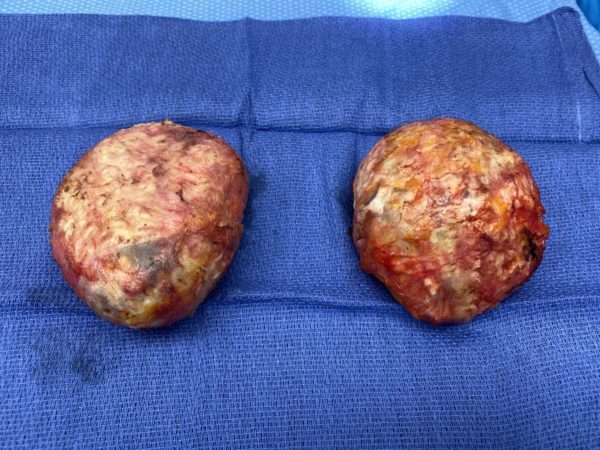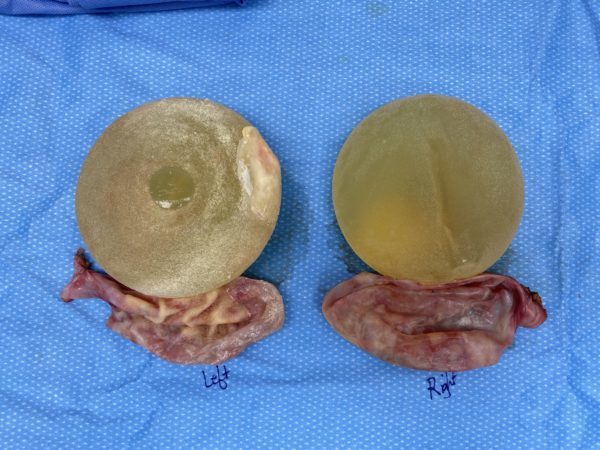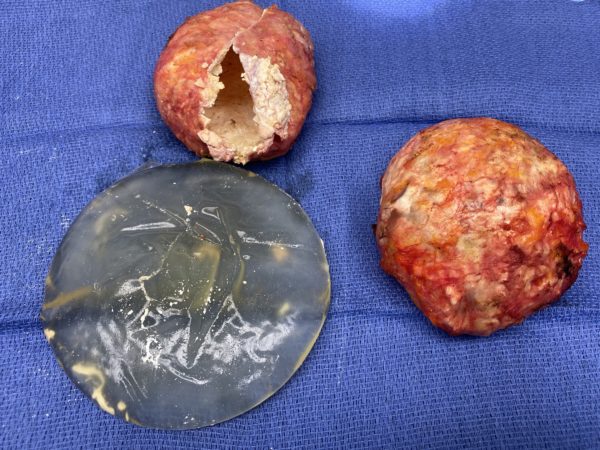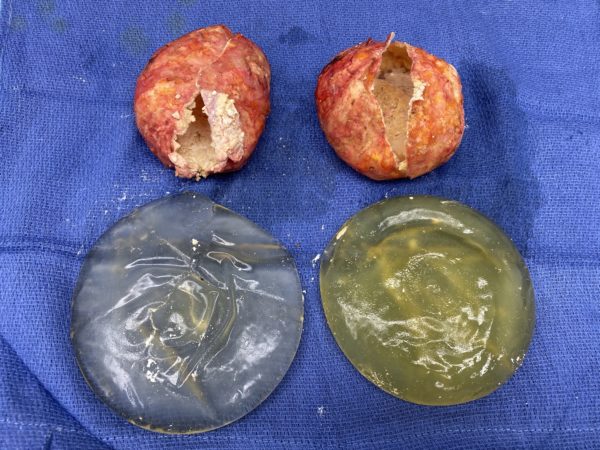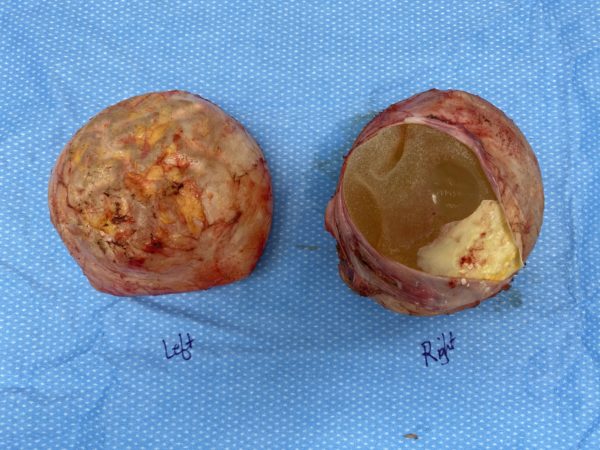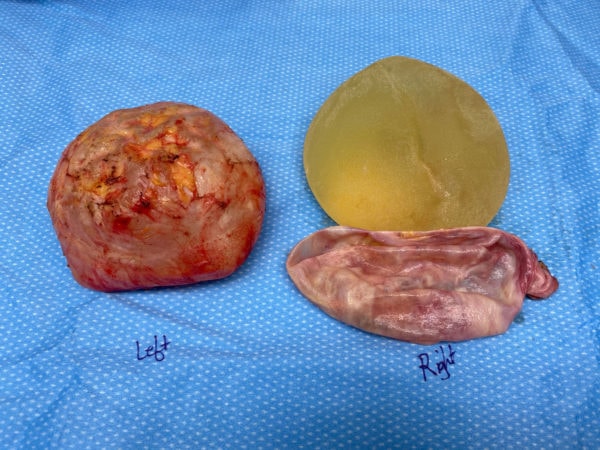En bloc capsulectomy is very different from regular capsulectomy. En bloc capsulectomy is not only the complete removal of the scar tissue surrounding a breast implant, but doing so in one complete piece. The surgery involves the removal of a breast implant while it is still encased in the entire scar tissue capsule that surrounds it, as the term “en bloc” means “all together”. Many surgeons remove the capsule in pieces, while others may leave significant portions of the capsule in the breast pocket, and neither approach is equivalent to the en bloc procedure. The difficulty for the patient is that they may never know what type of capsulectomy is being performed, even if the surgeon claims to perform en bloc capsulectomy.
This complex procedure requires a great deal of surgical precision to perform correctly, and it is wise to seek out a surgeon who has advanced training and experience in en bloc explant techniques if you need and/or desire the procedure. Based on the nature of your concerns, one of our board-certified plastic surgeons can recommend the explant procedure that is best-suited for addressing your condition and achieving your goals. When silicone implant leakage occurs, certain health problems have developed, or an elevated risk of BII (breast implant-related illness) or BIA-ALCL (breast implant-associated anaplastic large cell lymphoma) is causing concern, your physician may suggest en bloc capsulectomy.
If you have questions about en bloc explant, we encourage you to explore the informative sections provided below and contact Pinsky Plastic Surgery to schedule a consultation.
